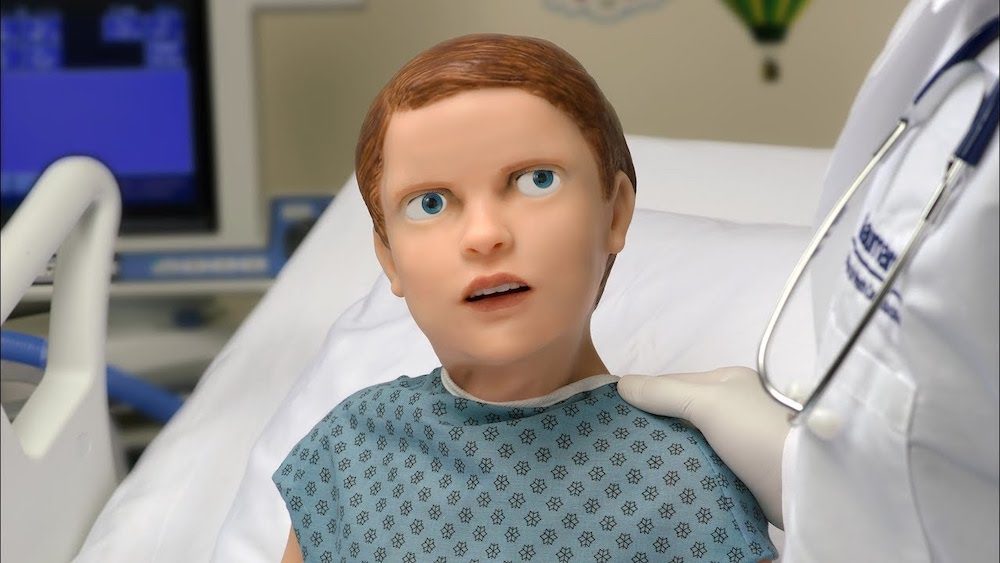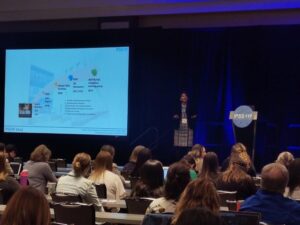Pediatric Simulator
A Pediatric Simulator is a life-like manikin that represents the body of a child which is utilized in medical simulation to help educate and train healthcare professionals. These pediatric simulation manikins are known to offer features such as realistic hands, feet, fingers and toes, soft upper body skin over a hard upper body for a realistic feel, jointed elbows, wrists, knees and ankles, a fully articulating head and jaw with teeth and tongue and much more to increase learning outcomes. In healthcare, peds are considered a speciality of medicine and nursing due to the stark differences in clinical protocol related to the care of a child versus an adult patient. As such, clinicians should be educated and trained with human patient simulators that most closely resemble pediatric patients.
With such a life-like child appearance, and by offering sophisticated performance modules, peds manikins have a sensible and practical physiology for the purpose of training in pediatric care. The technology provides learners with the ability to focus on a broad range of pediatric skills in order to gain exposure and practical experience of life-threatening pediatric problems.
The leading organization dedicate to pediatric simulation is the International Pediatric Simulation Society (IPSS) which is a global community of pediatricians, pediatric subspecialists, pediatric nurses, educators, and other allied health professionals from over 30 countries, all dedicated to improving the care of infants and children worldwide through multi-disciplinary, simulation-based education, training, and research. The research article “Review of Simulation in Pediatrics: The Evolution of a Revolution” is a great resource to learn more about the unique needs of peds simulation.
Sponsored Content:
PediaSIM From CAE Healthcare
One Pediatric Simulator product is the CAE Healthcare Inc (CAE) PediaSIM, representing a six-year old patient with a comprehensive set of clinical design features for trauma, nursing and emergency response training. Learners that get to practice and test their skills on the PediaSIM manikin are given the opportunity to gain the skills they need to achieve mastery in a range of pediatric critical interventions, such as needle airway management, chest tube insertion and cricothyrotomy.
This product also provides advanced simulation training and healthcare programs focused specifically on the care of children. With PediaSIM, users tend to benefit from validated physiology and exceptional features, allowing them to gain advanced skills and competency specific to pediatric care. This is so employers and healthcare providers can work to improve the overall performance of their staff.
Oftentimes the treatment of children is thought of as the treatment of a small adult, but this is not the case. Children have unique physiology and should be cared for accordingly. Successful performance outcomes are driven by quality education and training, which the PediaSIM manikin is able to provide.
Sponsored Content:
“The physiology of the pediatric simulator plays a definitive part in the students’ assimilation of the physiological changes in order for them to think critically in providing the care needed for their pediatric client,” Joy Thomason, RN, MSN, an Assistant Professor at Union University School of Nursing, said.
Making this product an especially effective training module, the PediaSIM offers two learning platforms: PediaSIM HPS for anesthesia, respiratory and clinical care, and the PediaSIM ECS, designed for medicine, nursing and health sciences. Together, the two platforms provide the means for learners to gain advanced skills and competency in the full spectrum of pediatric care.
Furthermore, the PediaSIM patient manikin supports a wide range of realistic, clinical interventions. Together, these platforms and interventions are what enable learners to practice the high demands of children’s healthcare in a risk-free training environment.
For example, the medical simulation product’s realistic airway system features an advanced airway management system for realistic practice in nasal and oral intubation and transjet ventilation. PediaSIM HPS supports advanced airway management, mechanical ventilation and oxygen therapy. These management and therapy systems are monitored using actual clinical equipment for even more realism throughout the training process.
Along with performance benefits, the PediaSIM simulation manikin helps teams and learners to improve their communication across pediatric critical care. Additionally, the manikin is easy to use and to manipulate.
Operating PediaSIM is simple and intuitive with the standard Müse interface and menu of Simulated Clinical Experiences (SCEs) which can be preset easily. This simplicity helps ensure that an instructor can focus more time on teaching than providing a tutorial on operation techniques and protocols.
For those wanting to enhance the capability of their PediaSIM training platforms, there are optionals extras (including hardware add-ons and accessories) that can be purchased as well.
S2225 Pediatric HAL From Gaumard
Another Pediatric Simulator product is Gaumard Scientific’s S2225 Pediatric HAL simulator. The S2225 Pediatric HAL is designed to help healthcare professionals and learners of all levels to develop the specialized skills needed to effectively communicate, diagnose and treat young patients in nearly all clinical areas. As the product is wireless and tetherless, the learning tool can be accessed remotely and at virtually any time.
This manikin is an advanced pediatric patient simulator which offers lifelike child emotions through dynamic facial expressions, movement and speech. Some of the emotions which this medical simulation manikin is able to demonstrate are anger, transient pain, ongoing pain, amazement, puzzlement, worry, anxiety, sleepiness and sadness.
By including interactive eyes and active facial expressions, dynamic lung compliance with true ventilator support and real patient monitor support (including SpO2, EKG, capnography, NIBP, live pacing and defibrillation) the manikin is able to prepare users for a wide variety of child care scenarios. This product additionally offers means of emergency intervention, such as surgical airway, needle decompression and chest tube insertion.
Along with these lifelike features, the S2225 Pediatric HAL’s level of interaction and in-depth patient-provider communication can help users to assess verbal and non-verbal cues. This educational and training in cues is designed to improve upon patient-provider communication skills and empathy.
To illustrate nearly a dozen facial expressions, HAL can simulate a variety of emotional states to better approximate child behavior under medical circumstances. For example, users are able to set HAL’s emotional state to lethargic and the eyelids will droop automatically, head movement will slow and yawning will occur periodically. Powerful UNI software further allows participants to create their own facial expressions and emotions to expand the scope of the learning experiences.
Interactive eyes and color-changing skin allows the Pediatric HAL to illustrate signs of varying emotional states, trauma and many other neurological diseases and conditions. Examples of these states are: strabismus (exotropia and esotropia), nystagmus (eyeball twitching), blepharospasm (eyelid twitching), ptosis (eyelid droop) realistic idle eye movement, independent pupillary light reflex, mydriasis (blown pupil), anisocoria (unequal pupil sizes), programmable blinking rate, consensual pupillary light reflex and mild and severe seizures.
Lastly, the Pediatric HAL supports a broad range of real patient monitors and sensors. This capability allows users and instructors to practice setting up and operating equipment just as they would in real situations. Again, this is all to help ensure that healthcare professionals are prepared to act in medical scenarios as they arise.
Other Pediatric Simulators are Available from other leading medical simulator manufacturers like Laerdal Medical, Simulab, MedVision, and more. Can’t wait until the annual IMSH healthcare simulation conference to see the latest models? Complete our Find Vendor Form and connect now to leading vendors!
Pediatrics Simulator Latest News

Considerations for Family-Centered Pediatric Simulation Discharge Programs

Healthcare Simulation to Improve Family Knowledge and Skills: An Underused Educational Method
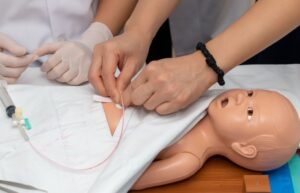
Three Scenarios to Improve Clinical Outcomes with Low Fidelity Pediatric Simulators
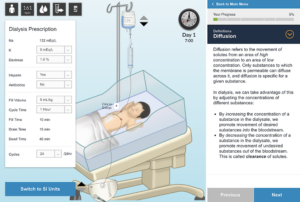
How OPENPediatrics Virtual Simulators Benefit Clinical Simulation Programs
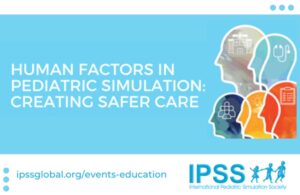
IPSSV2022: Human Factors in Pediatric Simulation
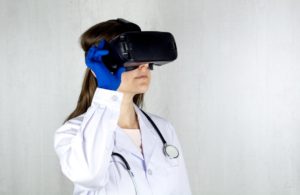
Healthcare Simulation Collaboration Establishes Mixed Reality Neonatal Training

Latest Clinical Simulation Research From Around the World | October 2021
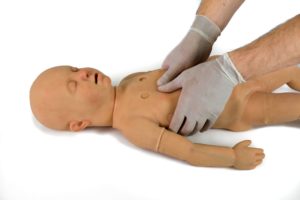
New Lifelike TruCorp TruBaby X Preps Learners for Pediatric Emergencies
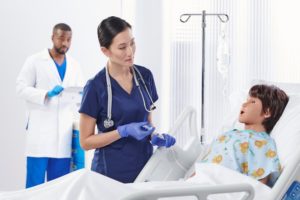
New CAE Pediatric Simulator ‘Aria’ Helps Learners Develop Patient-Care Skills
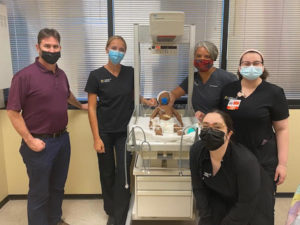
University of Central Florida Addresses Minority Infant Mortality Through Inclusive Clinical Simulation
Sponsored Content:



